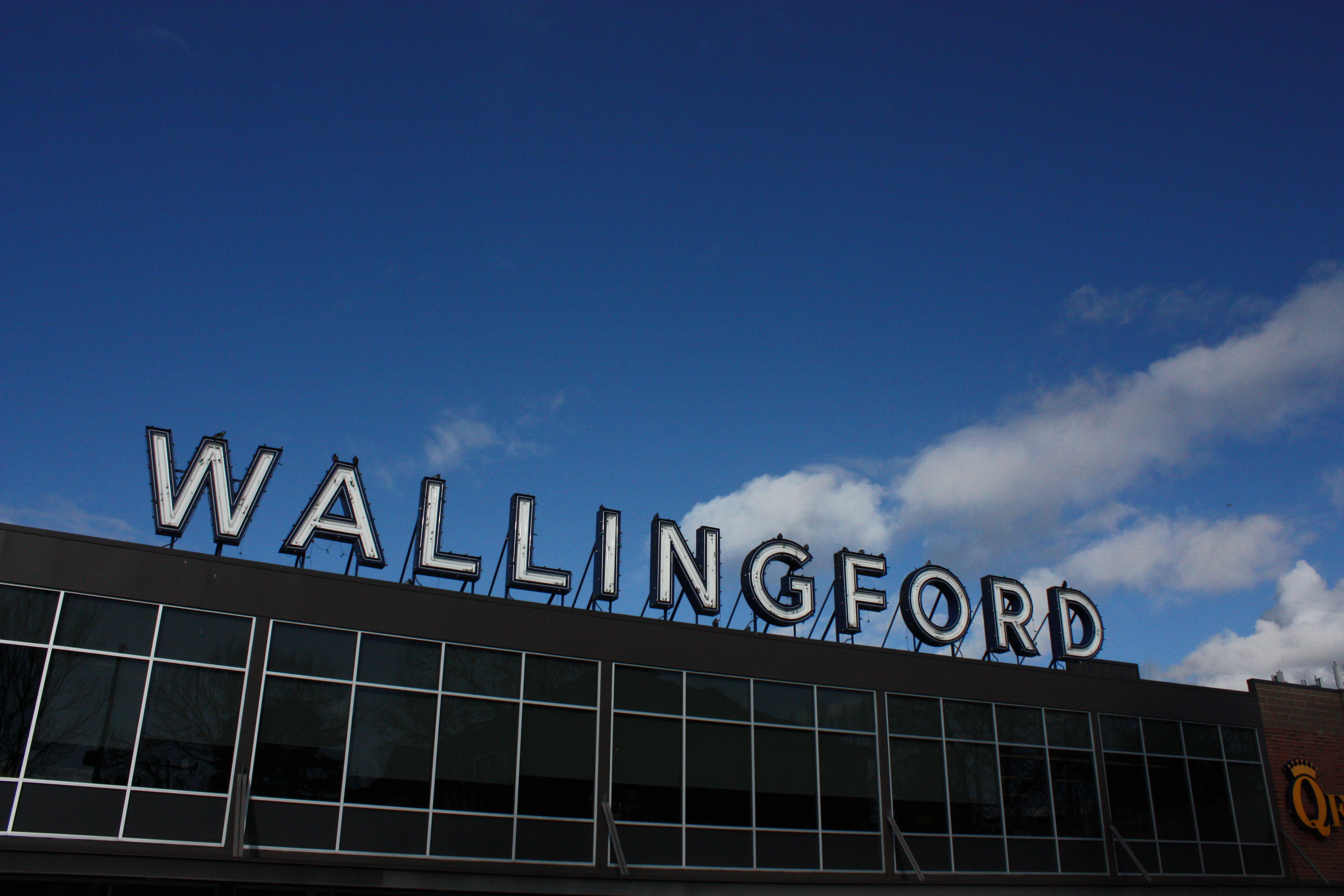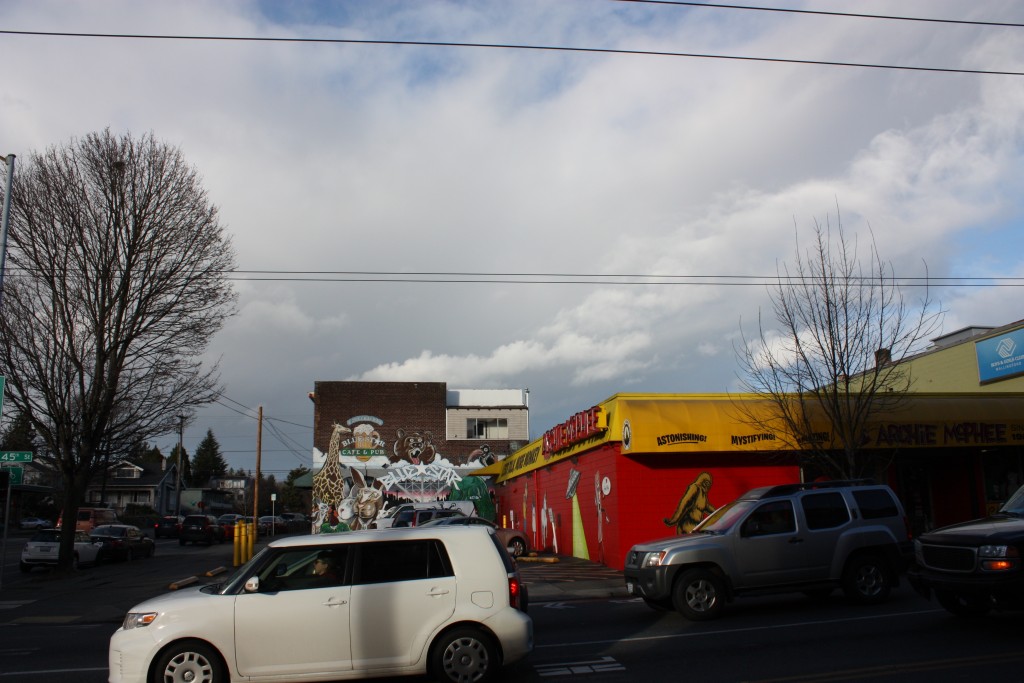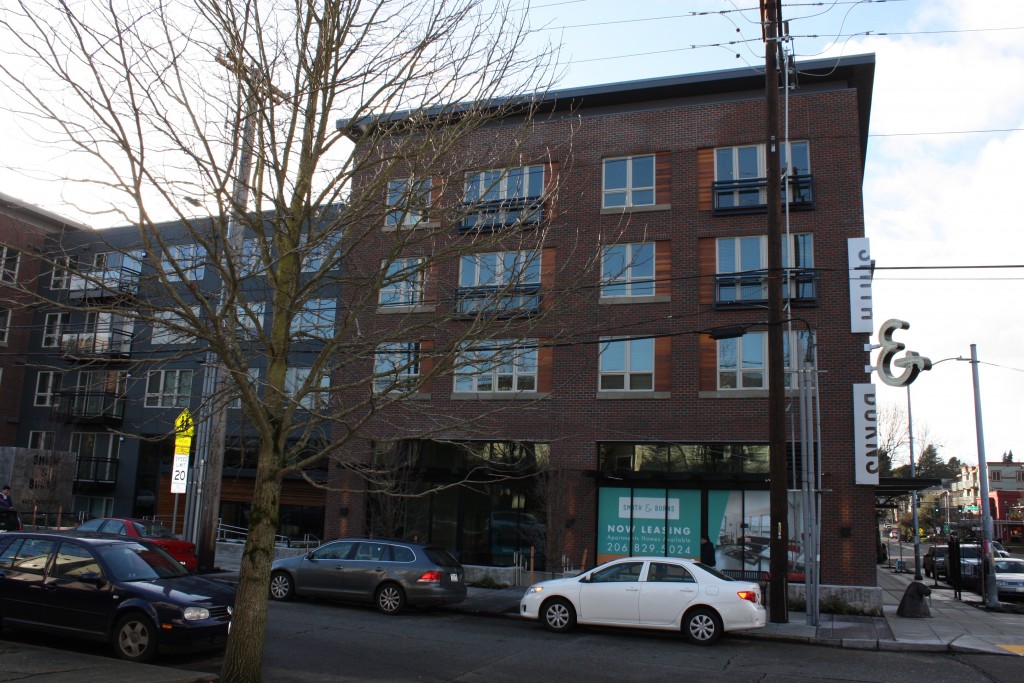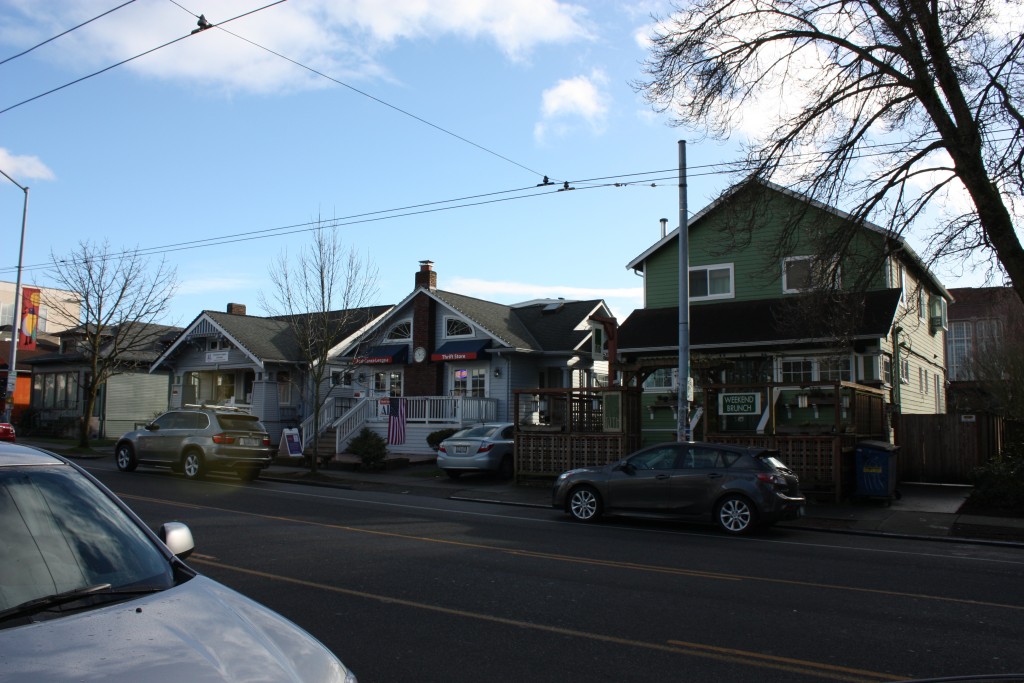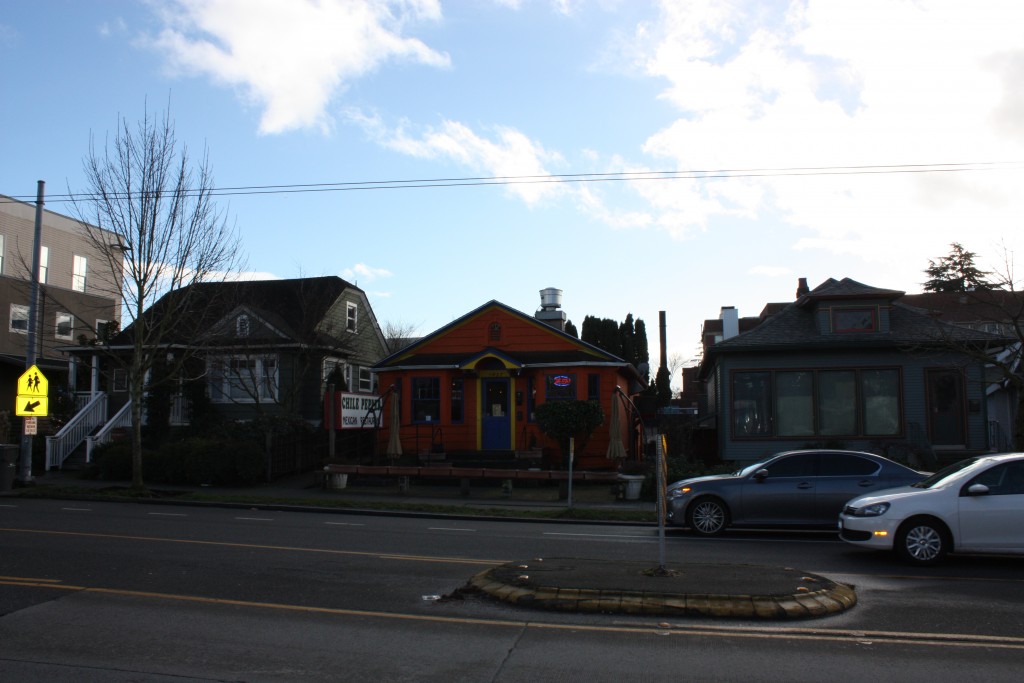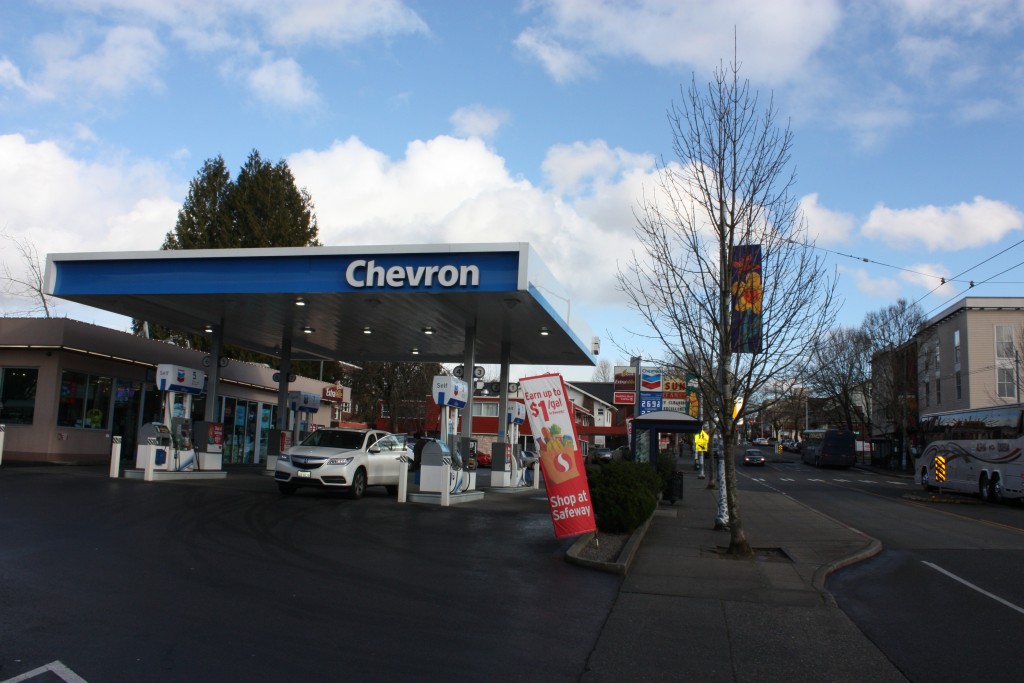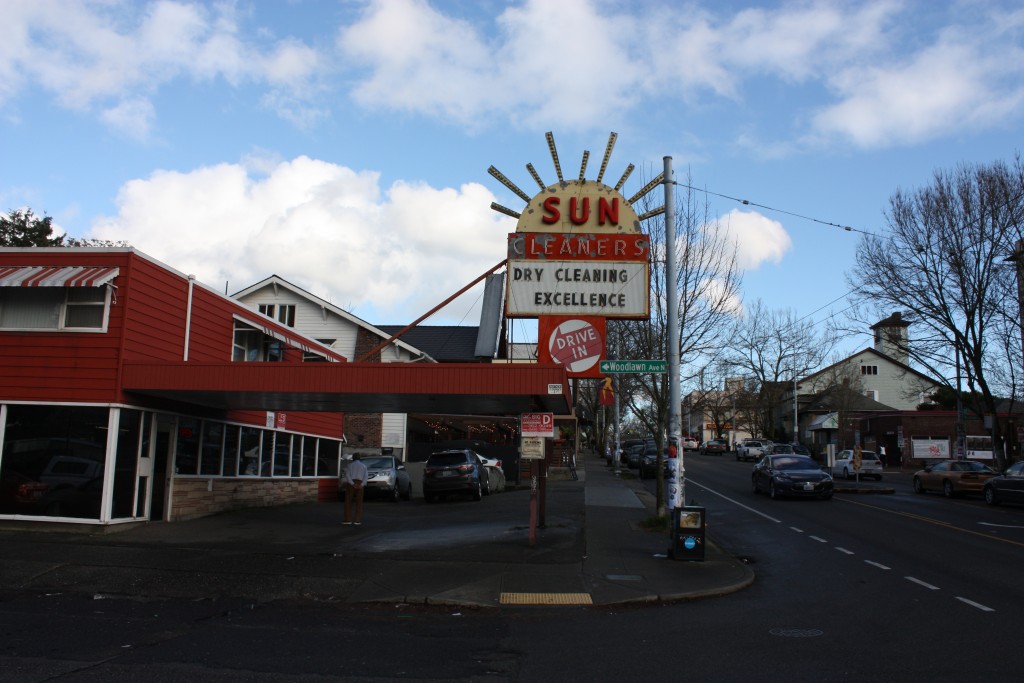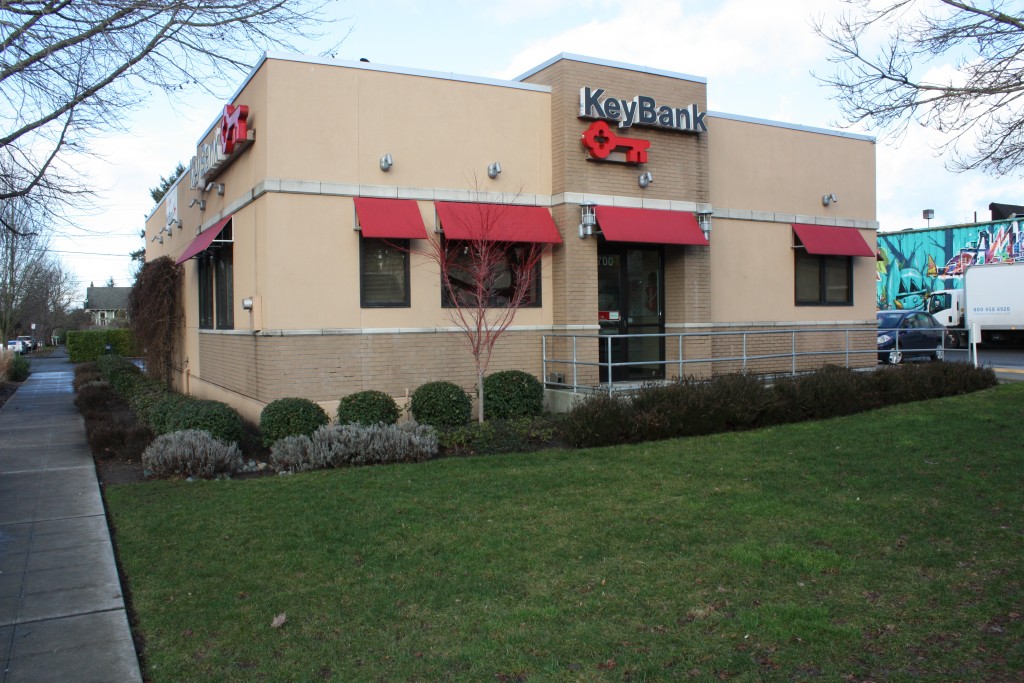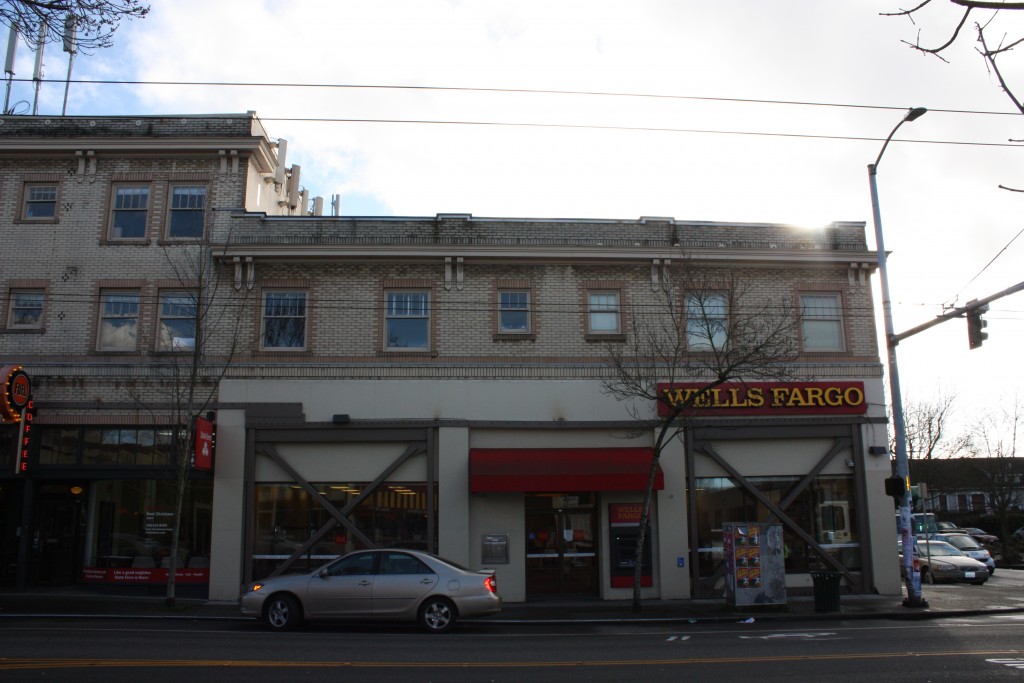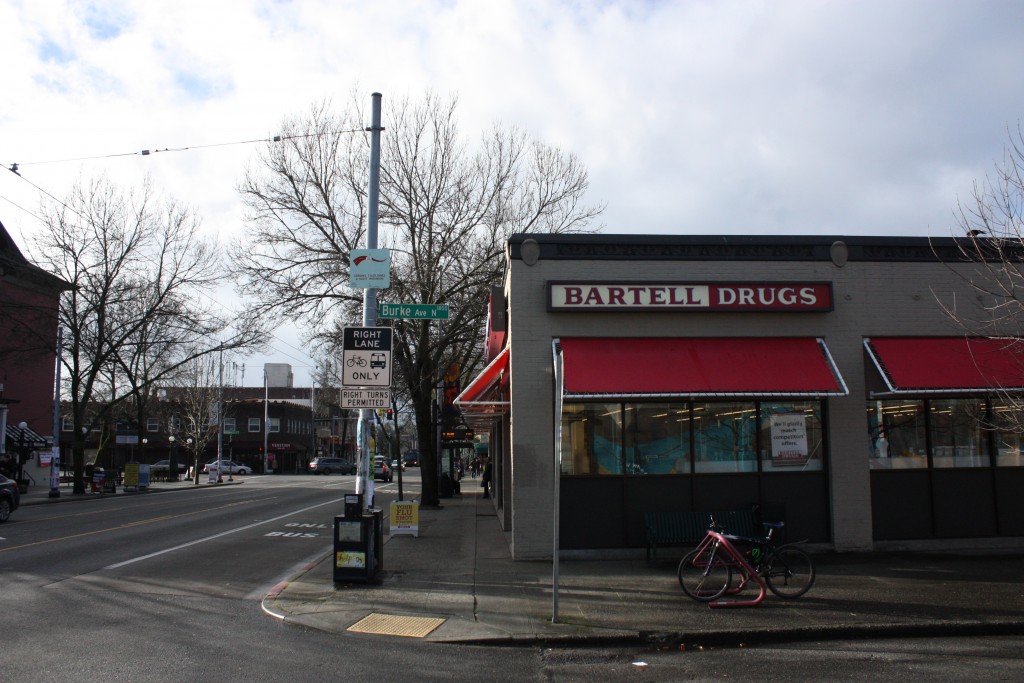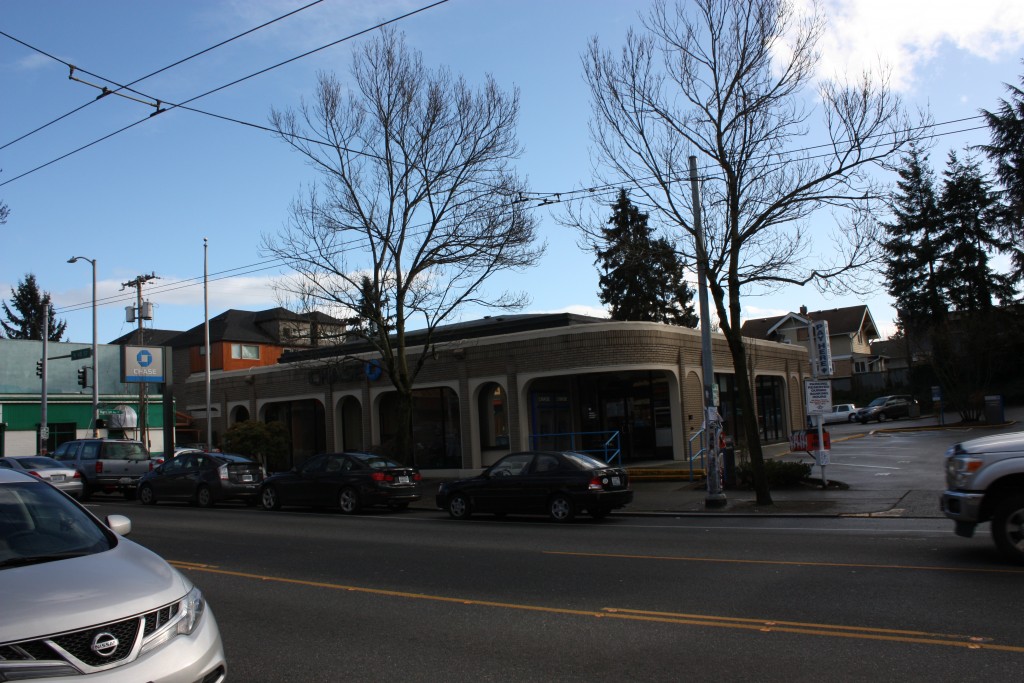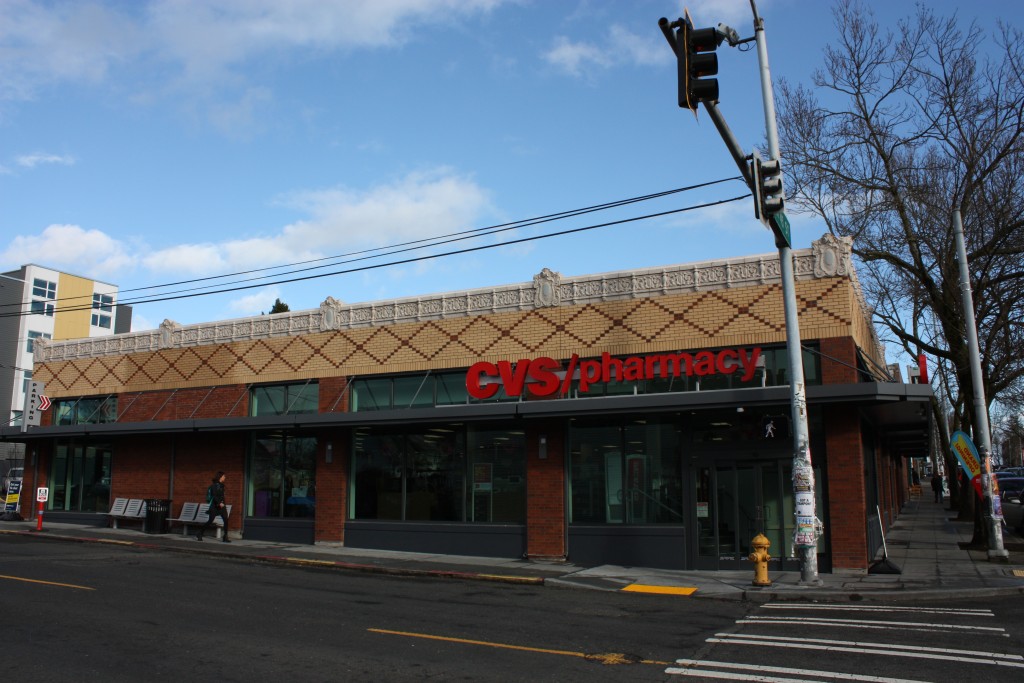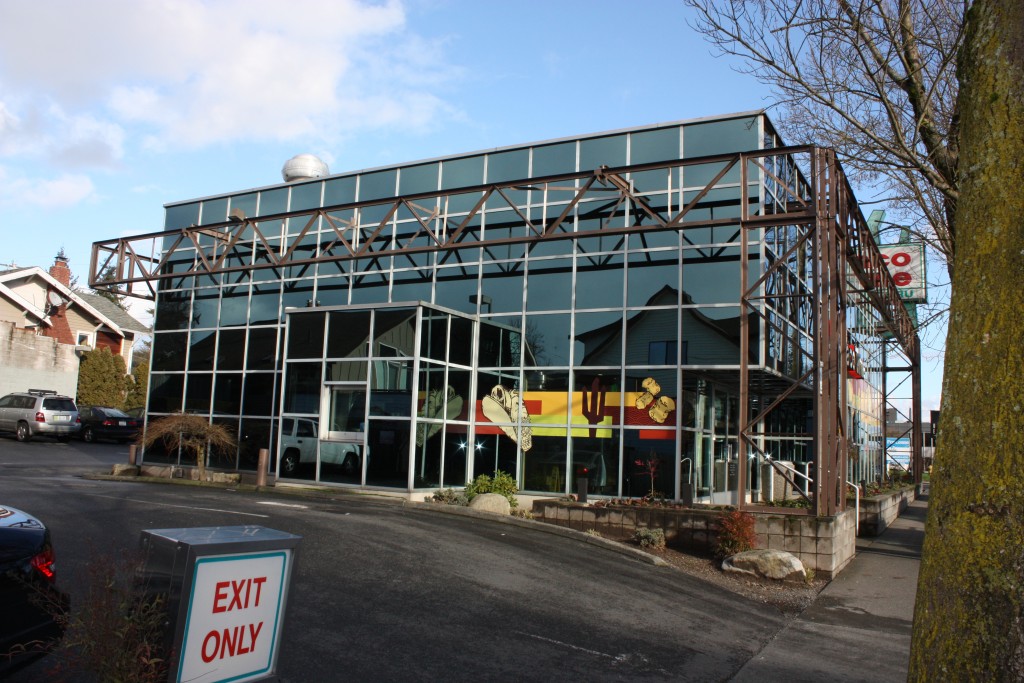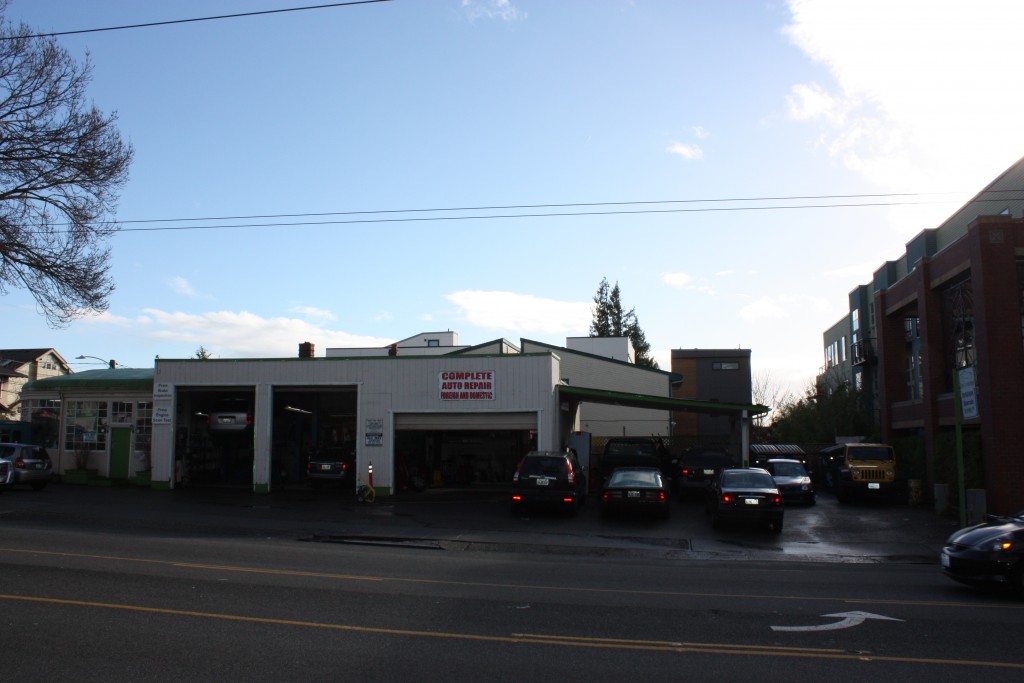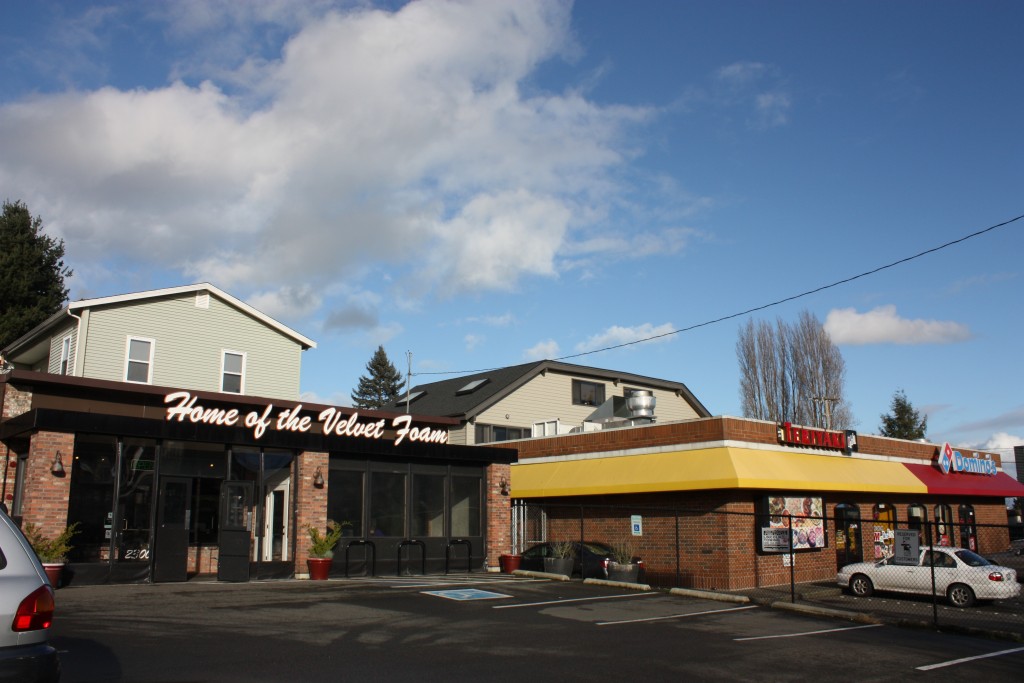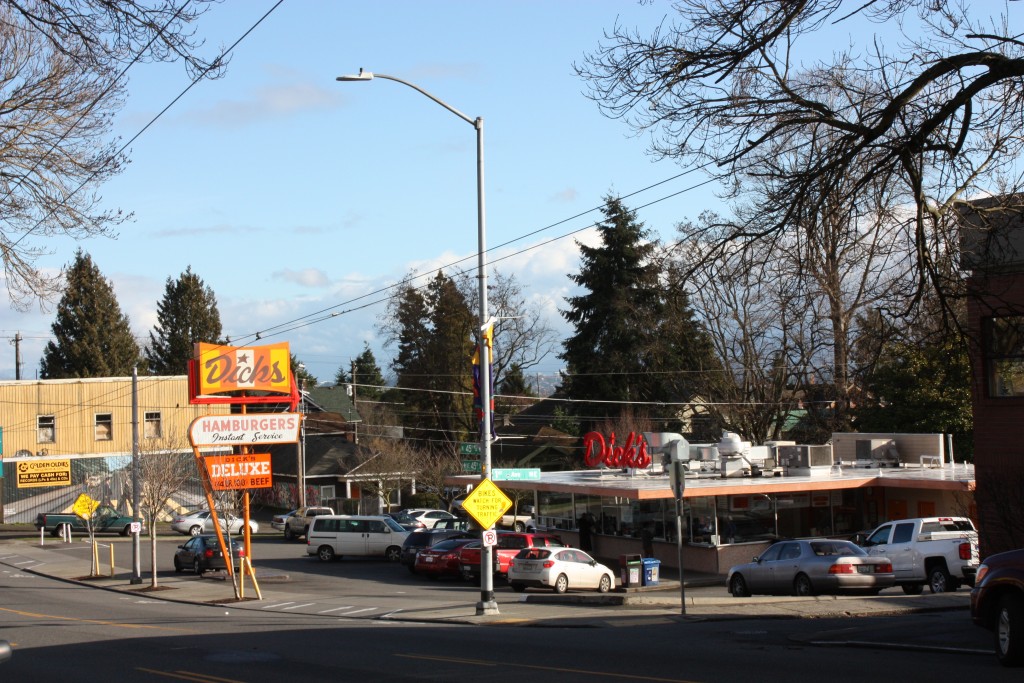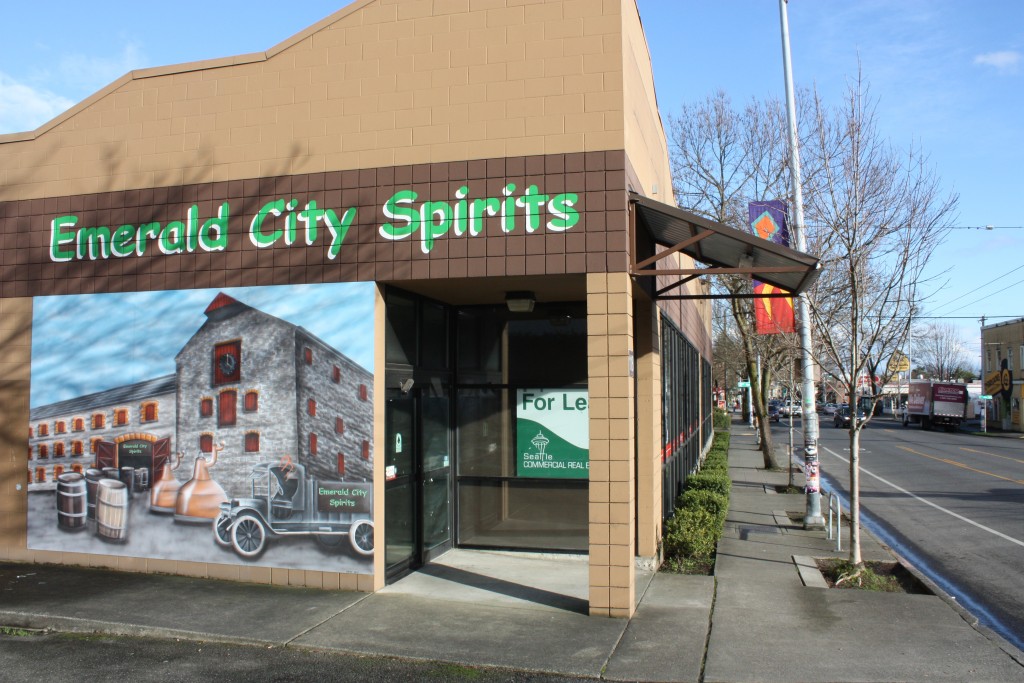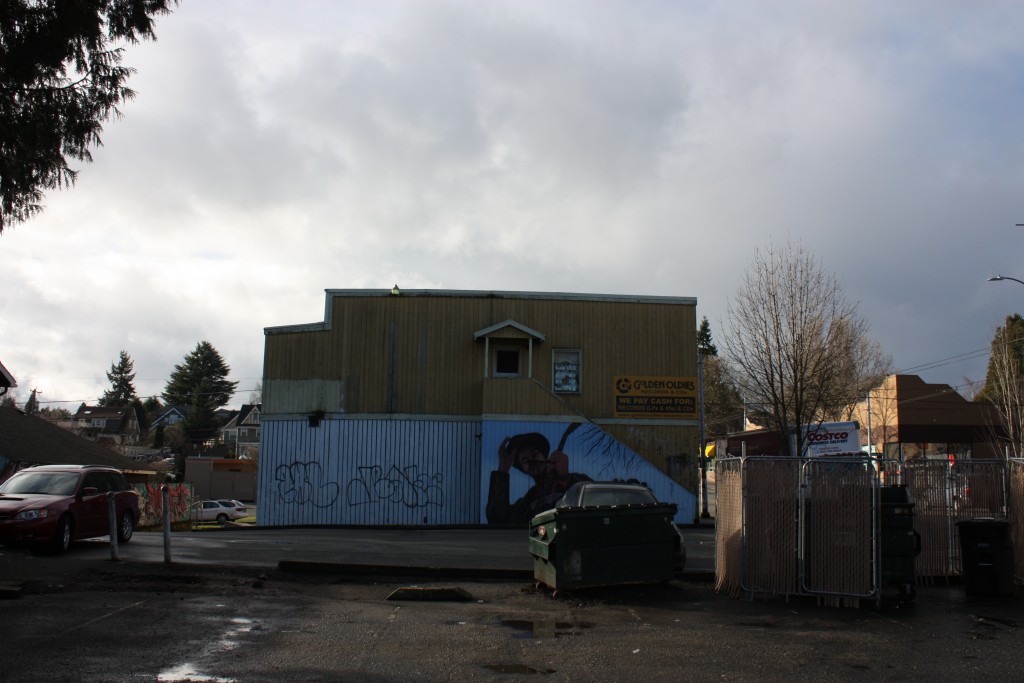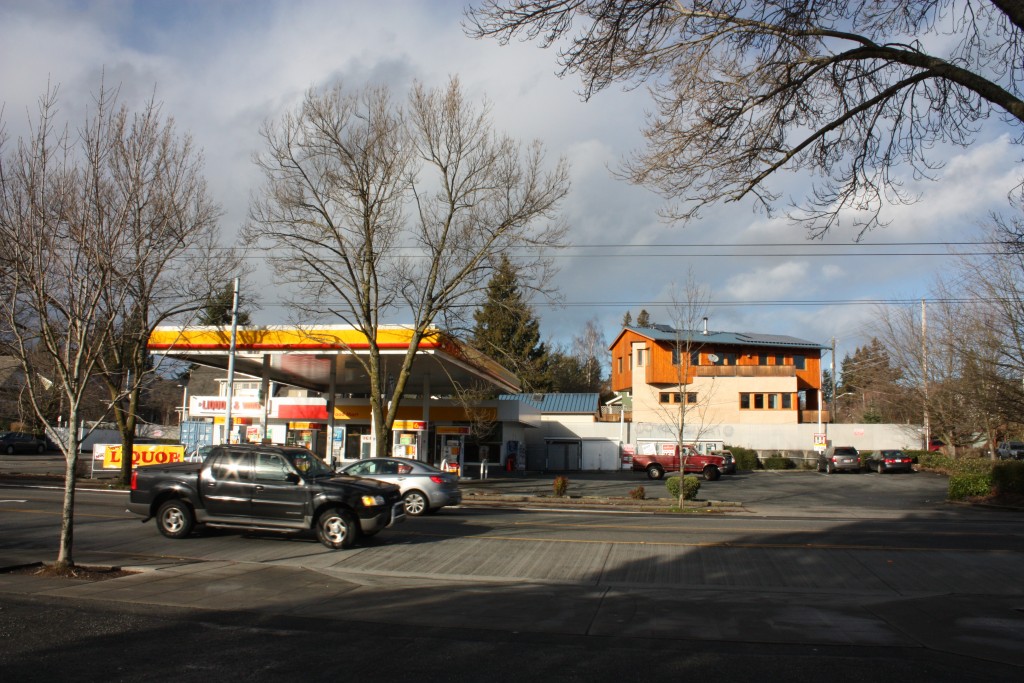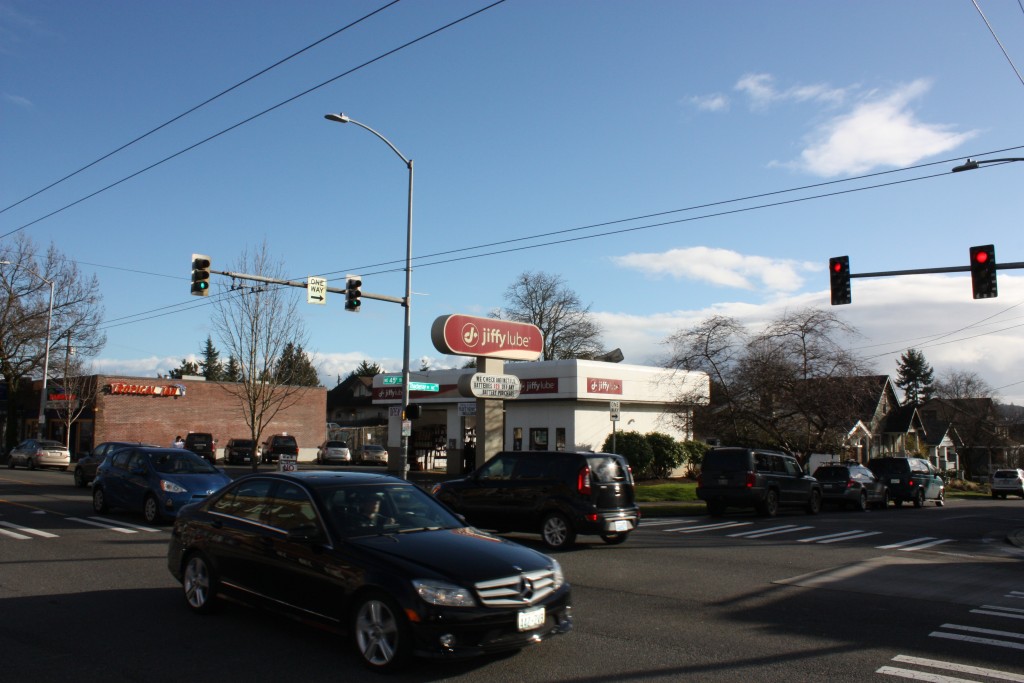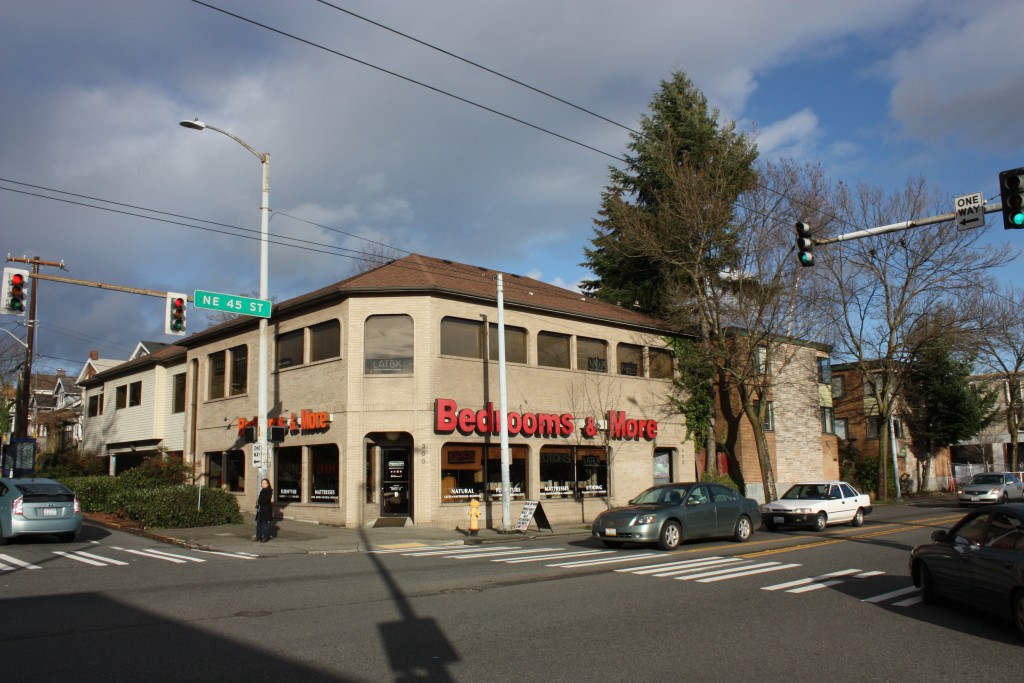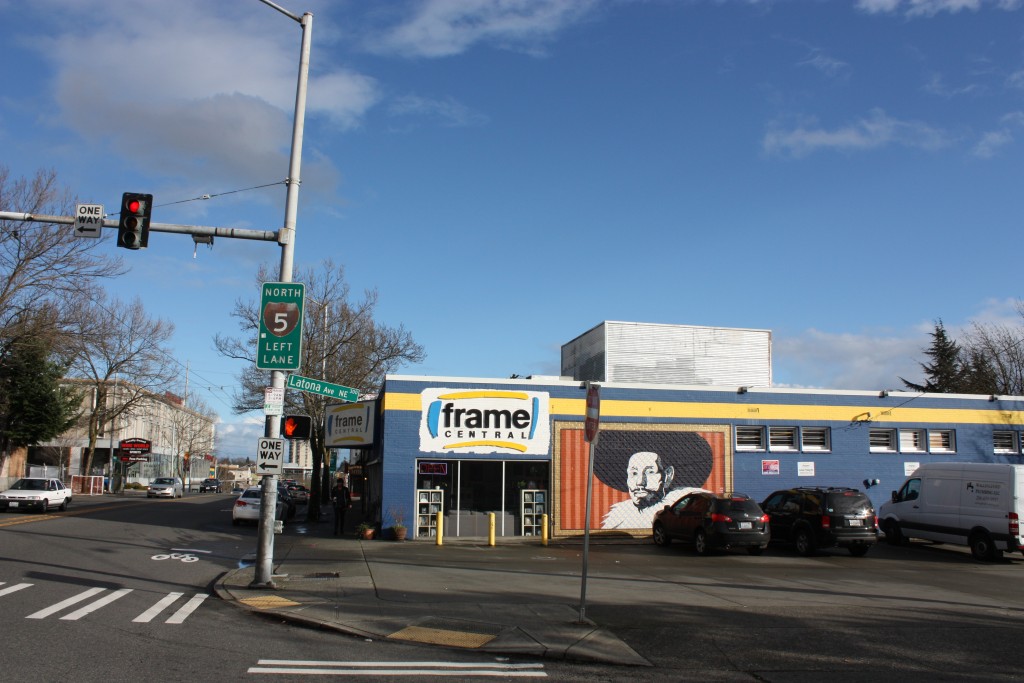Wallingford could become a flashpoint for backlash against the Housing Affordability and Livability Agenda (HALA) judging by recent events. Last month, the Wallingford Community Council held a public gripe session and wouldn’t allow newly elected Councilmember Rob Johnson join their panel due to his support for HALA. The Wallingford contingent was also among the noisiest dissenting voices at the HALA public meeting at City Hall last week.
HALA opponents contend that housing growth will crowd them out somehow. And since opponents almost invariably bring up parking sooner or later, apparently their vehicles are also in danger of being crowded out — albeit from government subsidized on-street spots.
Parking Paradox
Contrarily, I would argue some new apartment complexes in Wallingford and Fremont are being built with too much parking rather than too little. My own apartment building had only 100 of 128 parking spots rented despite near full occupancy of its 171 units and became a poster child in this Stranger article on parking oversupply.
Nonetheless, developers seem to continue repeating the same parking miscalculation. Just one block from my apartment, I’ve watched developers dig deep into the earth like greedy middle-earth dwarves seeking not gold but multilevel parking. One 274-unit building was built atop 264 underground parking spots. Another 124-unit apartment complex is in the midst of mining a cavern large enough for 119 parking spots.
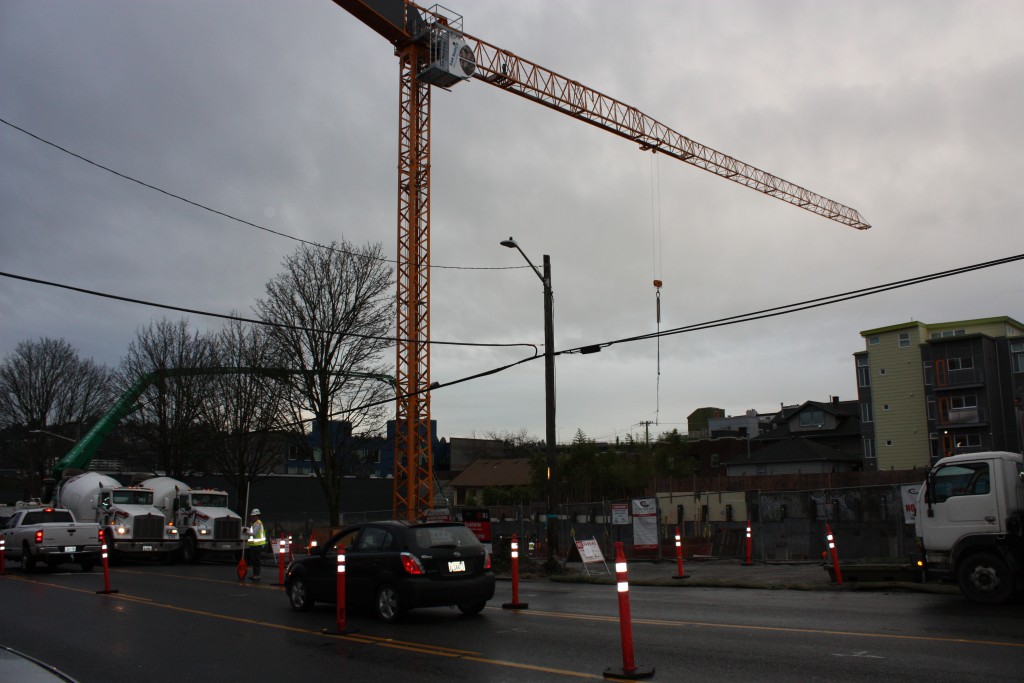
Typically, density opponents complain new housing simultaneously costs too much, contains too little parking, and creates too much traffic. This litany of complaints is self-contradictory. Parking is inherently expensive to build, costing as much as $50,000 per spot. Constructing parking adds significantly to project costs. Subsidizing that parking (landlord rarely charge the full cost of parking to tenants) induces driving and thus increases traffic. The way out of this downward spiral of rising housing costs and worsening traffic is to encourage the shift away from car ownership by not overbuilding parking to such an egregious extent. Therefore, we should welcome reasonable parking ratios or 1:2 or lower in apartment buildings well served by transit, and 45th Street, Stone Way, and Wallingford Avenue fit that bill.
Who Speaks For Wallingford?
Wallingford anti-density activists are perhaps feeling especially silenced after the closing of Wallyhood blog that had become a vehicle for their concerns. Seattle Weekly wrote a teary obituary for Wallyhood:
But Wallyhood hung on, remaining a notably strong voice for the leafy Craftsman paradise that is Wallingford. The site could seethe with provincial righteousness toward City Hall. It could also revel in the sorts of little mundanities that make a neighborhood a neighborhood. … According to frequent Wallyhood contributor Eric Fisk, the strength of a blog like Wallyhood is also its weakness: By speaking up for the neighborhood, it gave voice to viewpoints that are typically ignored in civic discourse. But that didn’t make those viewpoints any less ignored.
It’s clear that Wallingford’s anti-density advocates feel ignored by the political process. However, losing an election isn’t the same thing as being ignored. In District 4, Tony Provine ran against HALA and simply didn’t make it through the primary, garnering only 14% of votes. Provine and candidates like him — Catherine Weatbrook, Bill Bradburd, Debra Zech-Artis — got a platform. They failed to convince a majority.
Also note the presumption that they, the HALA skeptics, speak for the neighborhood. It would seem everyone who voted for pro-HALA candidates is misguided. Many people like the direction HALA is taking Wallingford and other neighborhoods. Embracing housing growth along key corridors and welcoming a more diverse neighborhood with a more urban form is going to make Wallingford stronger, not jeopardize it. And the Craftsmen paradise is still going to exist for people who want nothing more than that.
Wallingford Walking Tour
I wanted to disprove a central tenet of the anti-density argument that the neighborhood simply lacks the space for development and what is being torn down is too important. The idea that Wallingford lacks the space for redevelopment is demonstrably false. A cursory walk through Wallingford’s business district shows plenty of blocks are underused and ripe for development. I grabbed my camera and took just such a walk, starting at Stone Way and 45th Street and working my way east. Along 45th Street, I saw many one-story businesses and re-purposed single-family homes that could house larger mixed-use buildings to help meet the incredible demand for housing in Wallingford while also updating the storefronts on the street level.
A dozen commercial district blocks could be redeveloped without losing much besides gas stations, suburban-style banks, and dated — but not historic — one-story buildings. My hope is that when neighbors see that 45th Street is enriched rather than damaged by mixed-use development, they will welcome it along more corridors in Wallingford.
My starting point of Stone Way and 45th Street features three blocks developed with mixed-use buildings including Stone Way Apartments, the Verity Credit Union building, and the Walgreens building. The fourth corner is occupied by Archie McPhee, a comedic toy store, and is just asking for redevelopment, in my personal opinion. (Apologies to those who love gaudy toy stores.)
Archie McPhee toy store includes a side parking lot squandering a prime frontage at a busy intersection. The toy store could reopen in a redeveloped (and hopefully less hideous) building at the site.
The corner of 45th Street and Interlake Avenue is now anchored by a 150-unit mixed use apartment building. Opting for a refined brick facade, Smith & Burns forgoes the vinyl siding with which many Seattleites take offense. More blocks on 45th Street could see projects like this and be better off for it. Apparently, it’s already more than 25% leased ahead of a February 15th grand opening, showing the high residential demand in the neighborhood. My one caveat: the underground parking ramp will contain 157 parking spots for more than a 1:1 ratio. Mack Urban developed the building and apparently failed to learn with their own experience less than a mile away at Velo Apartments where even a 3:4 parking to apartment ratio proved quite excessive.
Between Interlake Avenue and Woodlawn Avenue, 45th Street is characterized by single-family homes that have been converted to business, such as restaurants and dental offices. A few remain residences. Small storefronts are good for street life and small business vitality. That said, blocks like these could contain more density if landowners chose to redevelop.
More single-family homes between Interlake and Woodlawn Avenue. The orange one in the middle houses the Mexican restaurant Chili Pepper.
Gas stations are low density uses and opportunities for development. Granted, removing the underground storage tank can sometime require doing environmental cleanup that can add a wrinkle to new projects. The high value of Wallingford real estate would probably make the cleanup work well worth it. Since Chevron often has more expensive gas than many competitors anyway, this station is unlikely to be too sorely missed.
Sun Cleaners at 45th and Woodlawn Avenue has an old Seattle charm or at least the sign does. Perhaps, a new building could preserve the sign?
Key Bank is an eye sore and a massive waste of space near the heart of Wallingford at 45th Street and Densmore Avenue. Suburban-style banks do not belong in urban neighborhoods.
Not to be outdone, Wells Fargo also went with a hideous renovation for its Wallingford branch just across the street. The historic building looks like it used to be pretty handsome.
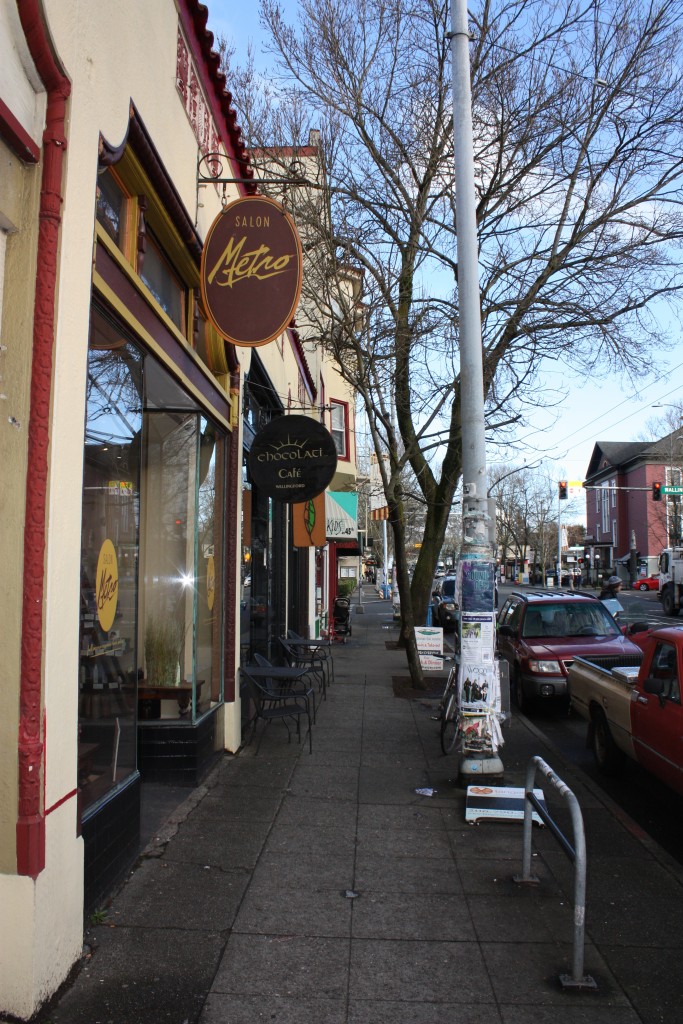
Some blocks work really well, such as this one between Densmore Avenue and Wallingford Avenue. A high density of windows and doors draw people in to a variety of storefronts. Some older buildings should be preserved to maintain an diversity of building ages, styles, and rents.
Bartell Drugs is a local chain but didn’t do much better than the national chains in urban design at 45th and Burke Ave. A redevelopment could put residences on top of a more engaging Bartell storefront.
Chase Bank, of course, went with a dumb design, one story, a big parking lot at 45th Street and Meridian Avenue.
Also at the intersection with Meridian, CVS took an old building and rammed itself inside the old brick facade to gain design board approval. We have to ask ourselves whether the outcome — a less ugly CVS store — is better than the alternative of completely redeveloping the site?
This Taco Time building at 45th Street and Corliss Avenue pretty clearly is a suburban bank from the Reagan era and an affront to all that is good and holy in design. Except for the tacos. The tacos are pretty good.
Across the street from Taco Time is Green Care Auto Repair, another opportunity for redevelopment.
The block between Corliss Avenue and Sunnyside Avenue is underutilized and set back too far, giving it a strip mall vibe. These businesses could easily front the street with 200 apartments or condos built on top of them.
Redeveloping the original Dick’s Burger location at First Avenue NE would face an uphill battle. Too much history. Too many burgers.
Across the street from Dick’s, a recently closed liquor store presents a ripe redevelopment opportunity. Perhaps the landowner will sell to a developer if they cannot lease the property soon.
Inexplicably, a large little-used parking lot swallows up space between Rancho Bravo and Golden Oldies Record Store. The rundown lot used to house the Rancho Bravo food truck before it moved into the Winchell’s Donut building. This whole block could use an upgrade, though, I’d like to see Rancho Bravo stay on the corner for my own selfish burrito needs. (Personal aside: I was waiting for a burrito while I took this photo.)
Across from Rancho Bravo, this Shell station makes for a dull block and a choice parcel for development.
If overpriced, hastily done oil changes ever go out of vogue, we could replace Jiffy Lube with a much more dynamic building at 45th Street and Thackeray Place. If basking your skin in carcinogen rays became passé, we could replace another building (Tropical Tan) and have ourselves quite a block.
Bedrooms & More at 45th Street and Latona Avenue is moving to a brand new location just to the east. Perhaps this parcel could find a better use once the current occupant has moved out.
Also at the Latona Avenue intersection, the Frame Central building could warrant an upgrade.
HALA Will Shape The Street For Good
Most parcels along
We are dancing around the question: what makes a good street? Is it nice dense buildings with first floor retail and rooftop patios and gardens? Or is parking lots dotted with small one story buildings? I’m hoping for a future where 45th Street supports even more businesses than it does now while also allowing hundreds more people to call Wallingford home. It’s a good neighborhood. I’m be happy to share it with more neighbors.
Doug Trumm is publisher of The Urbanist. An Urbanist writer since 2015, he dreams of pedestrian streets, bus lanes, and a mass-timber building spree to end our housing crisis. He graduated from the Evans School of Public Policy and Governance at the University of Washington in 2019. He lives in Seattle's Fremont neighborhood and loves to explore the city by foot and by bike.

